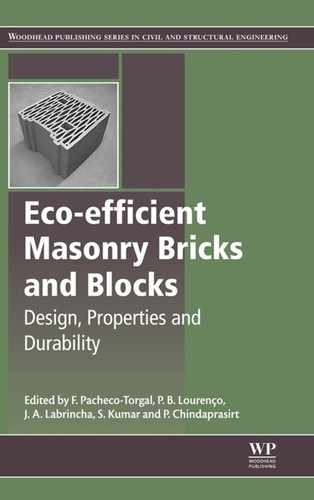ACI Committer 213. Guide for structural lightweight aggregate concrete. Farmington Hills: American Concrete Institute; 2001.
Alarcon-Ruiz L, Platret G, Massieu E, Ehrlacher A. The use of thermal analysis in assessing the effect of temperature on a cement paste. Cement and Concrete Research. 2005;35:609–613.
Albayrak M, Yorukoglu A, Karahan S, Atlihan S, Aruntas H.Y, Girgin I. Influence of zeolite additive on properties of autoclaved aerated concrete. Building and Environment. 2007;42:3161–3165.
Alexanderson J. Relations between structure and mechanical properties of autoclaved aerated concrete. Cement and Concrete Research. 1979;9:507–514.
Baspinar S.M, Demir I, Kahraman E, Gorhan G. Utilization potential of fly ash together with silica fume in autoclaved aerated concrete production. KSCE Journal of Civil Engineering. 2014;18:47–52.
Blanco F, Garcia P, Mateos P, Ayala J. Characteristic and properties of lightweight concrete manufactured with cenospheres. Cement and Concrete Research. 2000;30:1715–1722.
CEB. Autoclaved aerated concrete Manual of design and technology. The Construction Press; 1977.
Corinaldesi V, Mazzoli A, Moriconi G. Mechanical behaviour and thermal conductivity of mortars containing waste rubber particles. Materials and Design. 2011;32:1646–1650.
Demirboga R, Gul R. The effects of expanded perlite aggregate, silica fume, fly ash on the thermal conductivity of lightweight concrete. Cement and Concrete Research. 2003;33:723–727.
Demirboga R. Influence of mineral admixtures on thermal conductivity and compressive strength of mortar. Energy and Buildings. 2003;35:189–192.
Demirboga R. Thermal conductivity and compressive strength of concrete incorporation with mineral admixtures. Building and Environment. 2007;42:2467–2471.
Hendry A.W. Masonry walls: materials and construction. Construction and Building Materials. 2001;15:323–330.
Hess J.A, Kincl L, Amasay T, Wolfe P. Ergonomic evaluation of masons laying concrete masonry units and autoclaved aerated concrete. Applied Ergonomics. 2010;41:477–483.
Huang X, Ni W, Cui W, Wang Z, Zhu L. Preparation of autoclaved aerated concrete using copper tailings and blast furnace slag. Construction and Building Materials. 2012;27:1–5.
Ioannou I, Hamilton A, Hall C. Capillary absorption of water and n-decane by autoclaved aerated concrete. Cement and Concrete Research. 2008;38:766–771.
Jerman M, Keppert M, Vyborny J, Cerny R. Hygric, thermal and durability properties of autoclaved aerated concrete. Construction and Building Materials. 2013;41:352–359.
Just A, Middendorf B. Microstructure of high-strength foam concrete. Materials Characterization. 2009;60:741–748.
Keriene J, Kligys M, Laukaitis A, Yakovlev G, Špokauskas A, Aleknevicius M. The influence of multi-walled carbon nanotubes additive on properties of non-autoclaved and autoclaved aerated concretes. Construction and Building Materials. 2013;49:527–535.
Klingner R.E. Using autoclaved aerated concrete correctly. MASONRY Magazine: the Voice of the Masonry Industry; 2008. http://www.masonrymagazine.com/6-08/autoclaved.html.
Kočí V, Maděra J, Černý R. Exterior thermal insulation systems for AAC building envelopes: computational analysis aimed at increasing service life. Energy and Buildings. 2012;47:84–90.
Kurama H, Topcu I.B, Karakurt C. Properties of the autoclaved aerated concrete produced from coal bottom ash. Journal of Materials Processing Technology. 2009;209:767–773.
Kus H, Carlsson T. Microstructural investigations of naturally and artificially weathered autoclaved aerated concrete. Cement and Concrete Research. 2003;33:1423–1432.
Matsui K, Kikuma J, Tsunashima M, Ishikawa T, Matsuno S, Ogawa A, et al. In situ time-resolved X-ray diffraction of tobermorite formation in autoclaved aerated concrete: influence of silica source reactivity and Al addition. Cement and Concrete Research. 2011;41:510–519.
Meller N, Kyritsis K, Hall C. The mineralogy of the CaO–Al2O3–SiO2–H2O (CASH) hydroceramic system from 200 to 350°C. Cement and Concrete Research. 2009;39:45–53.
Mindess S, Young J.F, Darwin D. Concrete. USA: Pearson Education; 2003.
Mostafa N.Y. Influence of air-cooled slag on physicochemical properties of autoclaved aerated concrete. Cement and Concrete Research. 2005;35:1349–1357.
Narayanan N, Ramamurthy K. Structure and properties of aerated concrete: a review. Cement and Concrete Composites. 2000;22:321–329.
Narayanan N, Ramamurthy K. Microstructural investigations on aerated concrete. Cement and Concrete Research. 2000;30:457–464.
Petrov I, Schlegel E. Application of automatic image analysis for the investigation of autoclaved aerated concrete structure. Cement and Concrete Research. 1994;24:830–840.
Radhi H. Viability of autoclaved aerated concrete walls for the residential sector in the United Arab Emirates. Energy and Buildings. 2011;43:2086–2092.
Richardson I.G. The calcium silicate hydrates. Cement and Concrete Research. 2008;38:137–158.
RILEM recommended practice. Autoclaved aerated concrete-properties, testing and design. E&FN SPON; 1993.
Roulet C.A. Expansion of aerated concrete due to frost—determination of critical saturation. In: Wittmann F.H, ed. Proceedings autoclaved aerated concrete, moisture and properties. Amsterdam: Elsevier; 1983:157–169.
Shaw S, Henderson C.M.B, Komanschek B.U. Dehydration/recrystallization mechanisms, energetics, and kinetics of hydrated calcium silicate minerals: an in situ TGA/DSC and synchrotron radiation SAXS/WAXS study. Chemical Geology. 2000;167:141–159.
Taylor H.F.W. Cement chemistry. NY: Taylor and Thomas Telford Services Ltd; 1997.
Technology Brief. Autoclaved aerated concrete masonry units. Resource Information from The International Masonry Institute; 2010 Available from: http://www.imiweb.org/design_tools/tech_briefs/01.02%20AAC%20MASONRY%20UNITS.pdf Accessed 04.02.14.
Tikalsky P.J, Pospisil J, MacDonald W. A method for assessment of the freeze-thaw resistance of performed foam cellular concrete. Cement and Concrete Research. 2004;34:889–893.
Topcu I.B, Uygunoglu T. Properties of autoclaved lightweight aggregate concrete. Building and Environment. 2007;42:4108–4116.
Valore R.C. Cellular concretes–physical properties. Journal of American Concrete Institute. 1954;25:817–836.
Wongkeo W, Chaipanich A. Compressive strength, microstructure and thermal analysis of autoclaved and air cured structural lightweight concrete made with coal bottom ash and silica fume. Materials Science and Engineering A. 2010;527:3676–3684.
Wongkeo W, Thongsanitgarn P, Pimraksa K, Chaipanich A. Compressive strength, flexural strength and thermal conductivity of autoclaved concrete block made using bottom ash as cement replacement materials. Materials and Designing. 2012;35:434–439.
Yazici H. The effect of curing conditions on compressive strength of ultra high strength concrete with high volume mineral admixtures. Buildings and Environment. 2007;42:2083–2089.
![]() (8.1)
(8.1)![]() (8.2)
(8.2)![]() (8.3)
(8.3)![]() (8.4)
(8.4)






